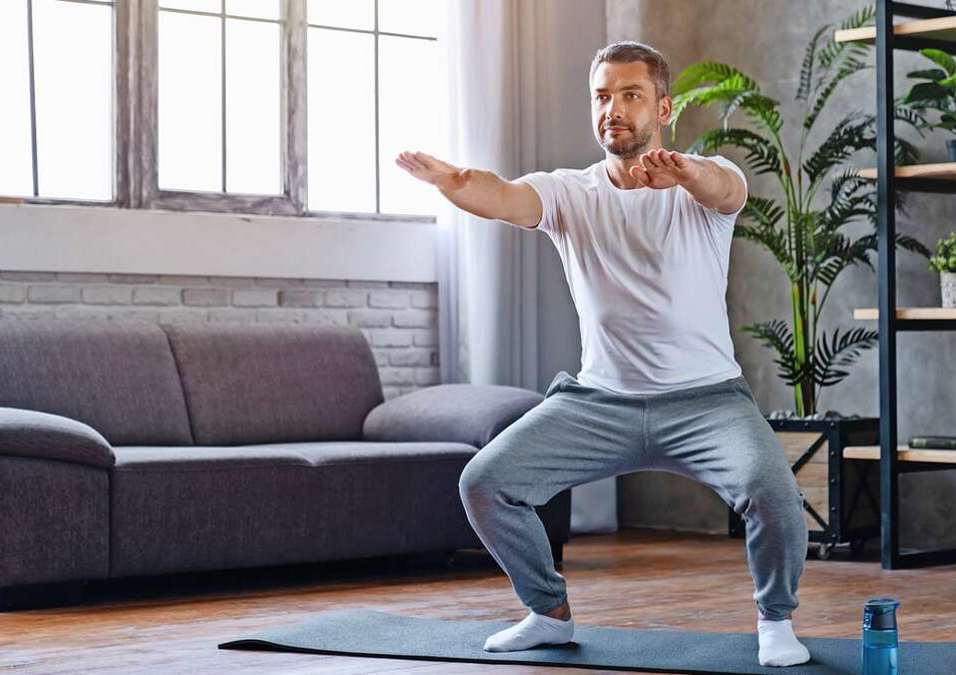Transform Your Health in Just 5 Minutes

SIGN UP FOR YOUR FREE DAY PASS TODAY!
If you think you're too inactive or too busy to exercise, here's some encouraging news for you.
Research shows that dedicating just five minutes a day to exercise can have significant effects on both your physical and mental well-being.
How long is your ideal workout?
Scientists at Edith Cowan University (ECU) in Australia have explored the benefits of a specific type of exercise called eccentric training.
This form of exercise emphasizes resisting gravity during the downward phase of a movement in a controlled manner.
The researchers have devised a simple series of exercises that fit seamlessly into your day without requiring gym equipment.
Professor Ken Nosaka, from ECU’s School of Medical and Health Sciences, has spent over ten years studying eccentric exercises and describes it as an underrated “key to better health."
He explains that most people concentrate on the lifting or pushing phase of movements, while greater benefits often come from focusing on the lowering part.
For instance, when you lower a dumbbell, descend stairs, or sit in a chair slowly, your muscles are stretched under tension, allowing for more effective repetitions with the same load.
Eccentric exercises build strength with less effort compared to traditional forms of exercise.
Studies confirm that these exercises can result in stronger muscles more effectively than concentric movements, which involve contracting the muscle, such as lifting weights.
The best part? Just a few minutes a day, focusing on eccentric exercises, can produce noticeable results.
Nosaka’s recent study published in the European Journal of Applied Physiology recruited 22 inactive participants who followed a daily exercise routine consisting of chair squats, chair reclines, wall push-ups, and heel drops.
Each movement emphasized the slow lowering phase and required only 10 repetitions.
Participants performed the exercises for just five minutes a day, five days a week.
After four weeks, there were notable improvements in muscle strength, endurance, flexibility, and even mental health indicators like mood and stress levels.
Eccentric exercise is not only effective for the muscles but also gives the brain a workout, offering potential cognitive benefits that may support healthy aging.
George Morris, an exercise physiologist from St Mary’s University, Twickenham, highlights that incorporating eccentric movements into workouts can prevent age-related muscle loss.
Since eccentric exercises require less energy, they remain practical even for those in their seventies and eighties.
Whether you're a seasoned fitness enthusiast or just starting, you can integrate eccentric training into your routine.
Previous research by Nosaka, published in the Scandinavian Journal of Medicine and Science in Sports, demonstrated that participants performing eccentric dumbbell curls gained more muscle strength than those doing concentric curls or isometric holds.
Downhill running is another example of eccentric exercise, as it engages the quadriceps during the descent and has been shown to reduce muscle fatigue from flat-ground running.
To begin, a basic five-minute routine is all you need. According to Nosaka, this short duration makes it manageable as a daily habit.
Even as you progress to more advanced versions of the exercises, such as adding weights or sets, sticking to 10 repetitions per set ensures optimal results.
Nosaka also recommends incorporating eccentric muscle strengthening into everyday life.
For example, lower yourself slowly when sitting down or walk down hills and stairs regularly. Each eccentric movement contributes to building strength and improving your health.
Eccentric Bodyweight Workout
Start with 10 repetitions of each exercise, performing them at least five days a week. Spread the movements across your day if needed. Once you get stronger, try the advanced versions while maintaining 10 repetitions per set. Add more sets as your strength grows.
Chair Squats
- How to Do It: Stand in front of a sturdy chair with hands on your thighs. Slowly lower yourself into a seated position, taking 3-5 seconds to sit down.
- Progression: Perform the squats on one leg, lowering slowly into the chair, and repeat on the opposite leg.
Chair Reclines
- How to Do It: Sit at the edge of a chair with your knees bent and feet planted firmly. Cross your arms over your chest and, with a straight back, slowly recline backward. Return to the starting position and repeat.
- Progression: Transition to sit-ups on the floor, focusing on lowering your body slowly to the ground.
Wall Push-Ups
- How to Do It: Stand facing a wall with your palms flat against it. Push away with straight arms, then bend your elbows to slowly lower your nose toward the wall. Push back and repeat.
- Progression: Move on to knee push-ups, then full push-ups on the floor, emphasizing the slow lowering phase.
Heel Drops
- How to Do It: Stand with your heels slightly off the edge of a step, holding a wall or banister for support. Slowly lower your heels as far as your range of motion allows, then return to the starting position.
- Progression: Perform one-legged heel drops, adding a weight in your opposite hand for greater resistance.
By incorporating these small adjustments into your routine, you’ll build strength, improve flexibility, and boost overall health in just five minutes a day.
Source: thetimes
The opinions shared in the GymNation blog articles are solely those of the respective authors and may not represent the perspectives of GymNation or any member of the GymNation team.














































































